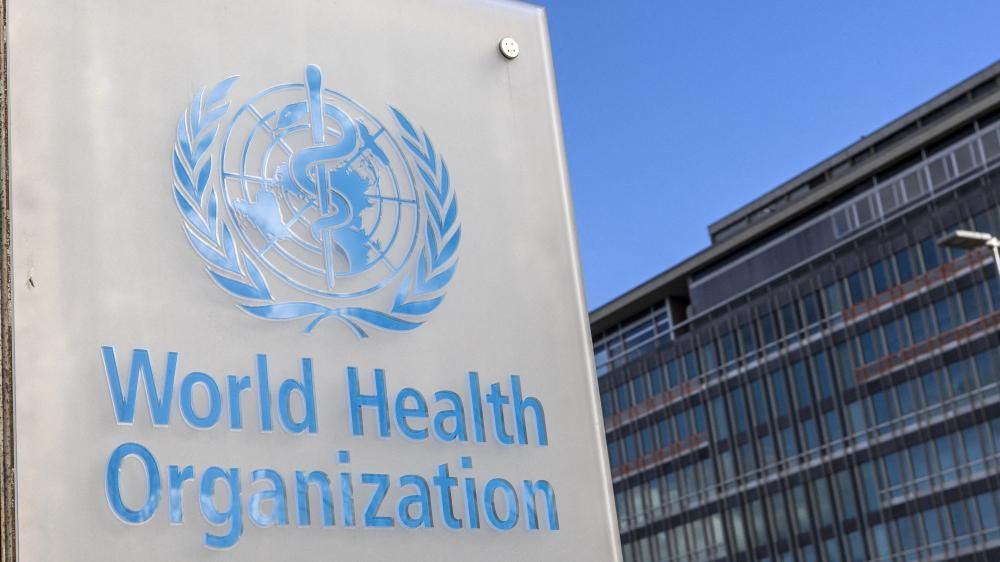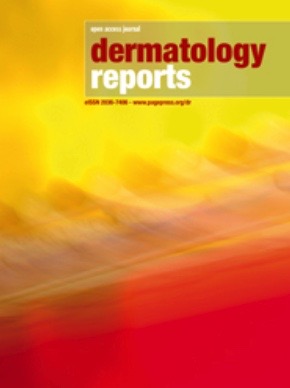US Rejection of WHO Amendments: Implications for Global Health and Sustainable Development Goals
Introduction: A Setback for Global Health Governance
The United States has formally rejected a package of amendments to the World Health Organization’s (WHO) International Health Regulations. This decision poses significant challenges to the advancement of several Sustainable Development Goals (SDGs), particularly those concerning global health, international cooperation, and institutional strength.
United States’ Stated Rationale
The US administration articulated several reasons for opting out of the amendments, citing concerns that directly conflict with the principles of global partnership enshrined in the SDGs. Key arguments included:
- Threats to National Sovereignty: The belief that the amendments grant the WHO unprecedented power over member states.
- Risk of Global Surveillance: Allegations that provisions for data gathering and sharing could establish a system for monitoring individuals globally.
- Concerns over Censorship: Fear that the regulations could enable “narrative management and propaganda” similar to that perceived during the COVID-19 pandemic.
- Institutional Weakness: A stated failure of the amendments to address the WHO’s perceived susceptibility to political influence.
Impact on SDG 3: Good Health and Well-being
The WHO amendments were designed to directly support SDG 3, which aims to ensure healthy lives and promote well-being for all. The US rejection undermines critical targets within this goal.
- Target 3.d (Global Health Risks): The amendments were intended to strengthen the capacity of all countries for early warning, risk reduction, and management of global health risks. The US withdrawal hampers the creation of a unified and robust global response framework for future pandemics.
- Information Sharing and Response: The WHO’s objective to bolster countries’ ability to share information and respond cohesively to outbreaks is now weakened, jeopardizing the collective ability to protect global public health.
Implications for SDG 10: Reduced Inequalities
A core component of the proposed amendments involved a commitment from member states to provide additional financing and medical resources to developing nations during health crises. The US decision to opt out directly impacts the pursuit of SDG 10.
- The rejection impedes the flow of essential resources, potentially widening the health and economic gap between developed and developing countries.
- This action runs counter to the principle of ensuring equitable access to health services and pandemic countermeasures, a key tenet for reducing global inequalities.
Challenges to SDG 17: Partnerships for the Goals
The US stance represents a significant blow to SDG 17, which emphasizes the need for a “global partnership for sustainable development.”
- Erosion of Global Cooperation: The decision is expected to hamper global cooperation and undermine the WHO’s ability to coordinate necessary international action during future health emergencies.
- Undermining Multilateralism: This move, coupled with recent US funding cuts to foreign aid, including for the WHO, signals a retreat from the multilateral cooperation essential for achieving the SDGs.
Debate on Institutional Integrity and SDG 16
The controversy highlights the tension surrounding SDG 16 (Peace, Justice and Strong Institutions), which calls for effective, accountable, and transparent institutions. While the US argues the amendments fail to secure the WHO against political influence, the global health body maintains the changes explicitly reaffirm national sovereignty and grant it no powers to impose mandates. This divergence undermines trust in the very global institutions required to advance sustainable development.
Analysis of Sustainable Development Goals (SDGs) in the Article
1. Which SDGs are addressed or connected to the issues highlighted in the article?
-
SDG 3: Good Health and Well-being
- The article’s central theme is global health, specifically the international response to health emergencies and pandemics like Covid, Ebola, and mpox. It discusses the World Health Organization’s (WHO) efforts to create regulations to better respond to severe disease outbreaks, which is a core component of ensuring healthy lives and promoting well-being for all.
-
SDG 17: Partnerships for the Goals
- The article heavily focuses on the breakdown of international cooperation. The US rejection of the WHO amendments, the political disputes, accusations of influence from China, and funding cuts directly relate to the challenges of maintaining global partnerships for sustainable development. The text highlights the importance of global cooperation for managing health crises, as mentioned by the WHO director-general who “hailed the changes last year for bolstering countries’ ability to share information and respond to potential pandemics.”
-
SDG 10: Reduced Inequalities
- The article touches upon the issue of inequality between nations in the context of healthcare access. It notes that the proposed WHO amendments “call for members to commit additional financing and medical products for developing countries,” which is a direct effort to reduce the gap in health resources and outcomes between developed and developing nations.
2. What specific targets under those SDGs can be identified based on the article’s content?
-
Under SDG 3: Good Health and Well-being
- Target 3.d: Strengthen the capacity of all countries, in particular developing countries, for early warning, risk reduction and management of national and global health risks. The article is entirely about this target, discussing the WHO’s new amendments designed “to better respond to severe disease outbreaks” and manage future “international health emergencies.” The US rejection of these measures is a direct setback to strengthening this global capacity.
-
Under SDG 17: Partnerships for the Goals
- Target 17.16: Enhance the global partnership for sustainable development, complemented by multi-stakeholder partnerships that mobilize and share knowledge, expertise, technology and financial resources. The conflict between the US and the WHO described in the article is a clear example of the challenges facing this target. The WHO’s effort to have amendments approved is an attempt to strengthen this partnership, while the US rejection undermines it.
- Target 17.17: Encourage and promote effective public, public-private and civil society partnerships. The article discusses the need for countries to “share information and respond to potential pandemics,” which relies on effective partnerships. The US criticism of the WHO’s susceptibility to “political influence” and the call for gathering and sharing health data also fall under the governance of such partnerships.
- Target 17.2: Developed countries to implement fully their official development assistance commitments. The article mentions that the US Congress “passed funding cuts for foreign aid, including cutting WHO funding,” which is a direct action against this target.
-
Under SDG 10: Reduced Inequalities
- Target 10.b: Encourage official development assistance and financial flows, including foreign direct investment, to States where the need is greatest, in particular least developed countries. The mention that the WHO amendments “call for members to commit additional financing and medical products for developing countries” directly aligns with this target of directing financial flows and resources to nations most in need.
3. Are there any indicators mentioned or implied in the article that can be used to measure progress towards the identified targets?
-
For Target 3.d:
- Indicator (Implied): Adoption and implementation of the International Health Regulations (IHR). The article discusses the WHO’s approval of “amendments to improve the International Health Regulations” and the US decision to “opt out.” The number of countries adopting or rejecting these amendments serves as a direct indicator of global health emergency preparedness capacity.
-
For Target 17.16:
- Indicator (Implied): The status of international agreements on global health. The success or failure of the WHO’s pandemic agreement and the amendments serves as a qualitative indicator of the health of the global partnership. The US rejection is a negative data point for this indicator.
-
For Target 17.2:
- Indicator (Mentioned): Financial contributions to international organizations and foreign aid. The article explicitly states that the US Congress “passed funding cuts for foreign aid, including cutting WHO funding.” This provides a direct, though not quantified, measure of a country’s commitment to development assistance.
-
For Target 10.b:
- Indicator (Mentioned): Commitment of financial resources and medical products to developing countries. The article mentions the call within the WHO amendments for “additional financing and medical products for developing countries.” The amount of financing and volume of products committed and delivered would be the specific indicator to measure progress.
4. Summary Table of SDGs, Targets, and Indicators
| SDGs | Targets | Indicators Identified in the Article |
|---|---|---|
| SDG 3: Good Health and Well-being | Target 3.d: Strengthen the capacity of all countries… for early warning, risk reduction and management of national and global health risks. | The adoption or rejection of the WHO’s amendments to the International Health Regulations by member states (e.g., the US opting out). |
| SDG 17: Partnerships for the Goals | Target 17.16: Enhance the global partnership for sustainable development… | The status of international cooperation and agreements, such as the US rejection of the WHO amendments, which hampers global partnership. |
| SDG 17: Partnerships for the Goals | Target 17.2: Developed countries to implement fully their official development assistance commitments… | Financial contributions to global health initiatives, as evidenced by the mention of US “funding cuts for foreign aid, including cutting WHO funding.” |
| SDG 10: Reduced Inequalities | Target 10.b: Encourage official development assistance and financial flows… to States where the need is greatest… | Commitments for “additional financing and medical products for developing countries” as called for in the WHO amendments. |
Source: ft.com







